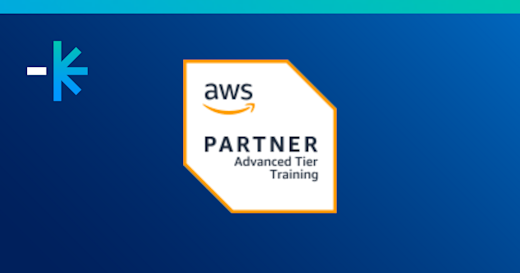Got a question? Call 1800 853 276 | Login
Cybercrime has acquired a staple role in the modern business world; with 56% of Australian businesses reporting an attack on a weekly, monthly, or quarterly basis. According to the latest Telstra Security Report, 65% of companies were interrupted from a breach in the last year alone.
It’s a rampant issue with no permanent fix in sight – though thanks to the latest tools, services, and training in cybersecurity; businesses are now exposed to tried-and-tested methods of enhancing corporate data protection.
Below, we explore the four main steps to achieving this – saving your business its finances, productivity, and reputation in the long run.
Educated yourself
Quality cybersecurity starts with the right knowledge of the latest security trends, best practices, and common risks to your business.
Get yourself up-to-speed on methods of identifying threats and common types of cybercrimes; in Australia, statistics show that ransomware, phishing, and malware are the top three tactics carried out among hackers. Ensure you aren’t just taking a reactive approach, either – but a _proactive one, establishing preventative measures and implementing the proper safeguards to keep potential threats at bay.
Of course, keep in mind that cybercrimes are constantly evolving, with attackers developing newer, more complex and sophisticated methods by the day. Keep yourself updated on the latest criminal trends, implementing appropriate protection as necessary. Publications such as Information Age report on the latest cybercrime practices and future predictions; for 2020, these include a continued targeting of consumer devices, pyramid scheme-style malware, and a possible commercialisation of the cybercrime industry.
Additionally, never equate a small business to be an unlikely target for cyber attacks. While 85% of small business owners believe this; their establishments are finer prey among hackers, being a likely path of least resistance. In fact, 43% of small businesses in Australia are the target of all cybercrimes. Unfortunately, 33% of businesses with less than 100 employees fail to take the necessary measures in protecting their data.
Establish the right protection
Once you’ve familiarised yourself with common tools and practices for preventing cybercrime, your next step is to implement them.
Start by having the right software in place to prevent or identify any malware infections. Invest in robust, reputable products that protect your data against both petty viruses and more malicious aggressors, such as ransomware. Plenty of modern security tools now include AI/machine learning, behavioural analytics, vulnerability scanning and incident management as part of their protective measures; helping you thoroughly manage current incidents and prevent others from taking place.
Another cautionary tactic is to use data encryption – rendering sensitive information useless when breached. The International Journal of Advanced Computer Science and Applications claims this method to be the “most efficient fix” in the case of compromised data, ranking it among the top three security considerations among Australian businesses. Encryption can be especially helpful for securing both customer and sensitive employee information.
Additionally, it helps to have good password hygiene. These include a periodical reset of passwords; using long, complex codes; and using different passwords across multiple social media sites and services. Having two-factor authentication in place also adds an extra layer of security, making it harder for attackers to breach your devices and online accounts.
It’s important, however, to also focus on your hardware security.
While it’s smart to have the proper software safeguards, these don’t protect your devices from possible loss, theft, or damage. It’s thus just as important to secure your digital equipment – whether it be through location tracking, or by physically attaching on-site computers to their desks.
Carry out regular audits and assessments
Quality security doesn’t stop at having the latest and greatest tools; managers must also perform regular audits and risk assessments of their current systems.
Performing a security audit helps ensure your protocols are up to compliance standards. It evaluates how well your activities adhere to obligatory policies, the quality of documentation (for your current processes and procedures), and how well incidents and specifications are communicated throughout the organisation.
A security audit helps you maintain robust safeguards and preventative measures, as well as identify areas for improvement.
These examinations can be done either externally or internally. External audits are performed by cybersecurity consultants or other outsourced trained professionals; while internal audits are done in-house – though are often seen as “practice runs” before the performing an external audit.
Risk assessments, while similar to security audits, place greater focus on mitigating risk. Typically carried out by a separate team or department, this group of dedicated experts concentrate on minimizing the risk of data loss. Not only does risk management keep you safe from potential threats, it also protects your business from exposing itself to spying competitors.
Furthermore, not all security frameworks are auditable. A simple assessment can substitute this by comparing such metrics to predetermined business goals, rather than compliance standards. This also ensures your company sticks to best practices, even if an audit is not possible.
Train your employees
Lastly, it’s mandatory to train your workers in the same quality practices and skills to maintain high-level cybersecurity.
While the latest software tools and security systems work wonders for data protection; such safeguards may still be circumvented with poor password, social media, internet, and network practices among workers. Reports show that a whopping 90% of breaches are caused through stolen information from workers who unwittingly provide access to hackers.
Getting employees up to speed on modern ways of preventing and responding to cyberattacks ensures that everyone does their bit in achieving greater business protection. Such training typically includes guidelines of acceptable technology use (especially among BYOD – Bring Your Own Device – workplaces); educating them on best password practices; and how to spot phishing scams.
Make sure workers are also aware proper network use, such as avoiding unsecure or public networks when accessing company data.
It further helps to have strong policies in place to guide employees. These can address appropriate use of company data, devices, and internet sties while at work; along with the types of business information they’re allowed to share on social media.
By fostering a healthy cybersecurity culture in your workplace, workers can feel part of the solution – encouraging them to adopt and maintain the same standards of data access and protection. Of course, it helps to have open communication between your security team and the rest of your business; keeping them updated on the latest protocols and breaches as they occur.
Protect your company data with proper skills and training
Cybersecurity skills needn’t be confined to IT professionals. With digital crimes rising (and evolving) in time, a basic knowledge of data protection (for both you and your workers) can further secure sensitive information from prying hands.
Thankfully, you needn’t go at it alone. We offer numerous cybersecurity courses under various partners including Cisco, (ISC)2, and RESILIA. Both managers and employees alike can sharpen their skills in cyber-resilient strategies, risk management, and response and recovery – creating a safer, more reliable workplace.
Enhance your business security, and enquire with us on a course today.











